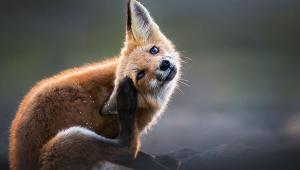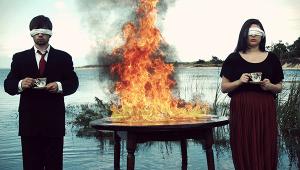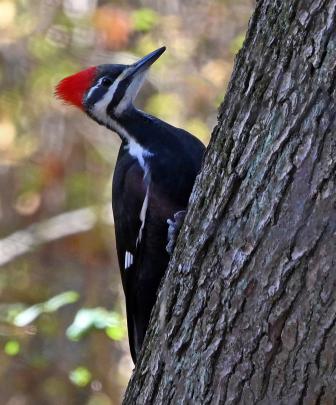Pro's Choice: John Bellenis’s Hospitality Photography: Capturing Resorts, Hotels, And Destinations In The Best Light
Architectural photography normally involves shooting exteriors and interiors, ranging from residential to corporate and industrial. Hospitality photography moves in a different direction. John Bellenis explains: “I would define hospitality photography as shooting hotels, resorts, cruise lines, spas, and destinations. It’s a niche market that encompasses a range of photographic disciplines: architectural exteriors, interiors, lifestyle, food, and travel. I enjoy it because it keeps things fresh and the demands are varied photographically. You have to be ready and able to handle anything at any time, which means having the gear with you to cope with any situation, from a large interior to a tight food shot.”

“I had to shoot this atrium at 2:30am, when the bar would be closed and the space would be entirely devoid of people. It’s never as easy as you think. Up until 1:30, they were cleaning up, removing the liquor, with guests still in the bar. We had to go in and rearrange everything, including putting bottles back in place.” John Bellenis worked with the existing lighting, adjusting settings on the hotel’s light board, augmenting that with fill light for the shadowy areas in the immediate foreground. He made the 6-second exposure on a Canon EOS 5D Mark III with a 24-70mm lens.
All Photos © John Bellenis
Across The Pond
John Bellenis studied photography in London, England, at Harrow and Watford Art Schools. After graduating, he assisted a number of photographers for a year, gaining experience in everything from tabletop to fashion and cars. “I probably learned more in that year assisting than in four years in art school.” When he opened his own studio, he expanded his portfolio to include hospitality. Back then he was shooting on Sinar (from 4x5 to 8x10), Hasselblad, and Nikon.
When he’d considered making the move “across the pond,” he’d contacted a local photographer’s rep, who emphasized the need to specialize. So Bellenis chose hospitality and hasn’t looked back since. Boston became his base of operations, as of 1992. Bellenis continued to shoot film until 2005. But when he made the move to these shores, he replaced all his Hasselblads with a Mamiya RZ67 Pro II system. “I still used my Sinar when I needed to employ camera movements, but nothing larger than 4x5 at this point.”

This was shot at the Royal Naval College in Greenwich, England, on 4x5 Kodachrome 64T, when Bellenis worked out of London. Bellenis determined the exposure, at f/32 and about one hour, by first testing on Polaroid. “After two minutes, we turned off all the table lights by way of the circuit breaker. I painted the tops of the columns on the left with a handheld flashlight (light from the table hit the columns further down). I was dressed in black, and because it was such a long exposure, I didn’t record on film.”

“Shooting at magic hour, I first photographed the room with all the lights on, followed by a second exposure with lights off, for the view out the window. I then blended the two images, removing any telltale reflections in the glass in post.”
The Move To Digital
“At one point, the bulk of my work went from print to web,” Bellenis observes. “Which meant I didn’t need the large, cumbersome film cameras. What’s more, when shooting hospitality, I can go from interiors and exteriors to lifestyle and food in the same day, so it made more sense for me to work with a 35mm-style D-SLR.” Bellenis now shoots with the Canon EOS 5D Mark III, owning several bodies. His primary lenses include the 24-70mm, 16-35mm, and 70-200mm—all f/2.8. He also uses the 24mm tilt-shift lens quite often. “The only real advantage to using a tilt-shift lens now is that it gives you less to do in post.” He adds: “I tend to like fast lenses because the viewfinder is a bit brighter and they let me use differential (selective) focus. Although I should add that I generally stop way down.”
The camera is normally mounted to a Gitzo pan-and-tilt head or a Manfrotto geared head on a Manfrotto tripod, unless he’s shooting lifestyle, in which case he shoots hand held. “I don’t usually shoot tethered because we have a lot of shots to do in a day and we’re moving all over a property.” He also notes that shooting to card cuts down considerably on setup time, and, by eliminating extra cables, creates a safer environment. “If I set up a studio-like environment for food shots on location, for example, I’ll shoot tethered.” He processes the Raw files in Adobe Lightroom, adding finishing touches in Photoshop.
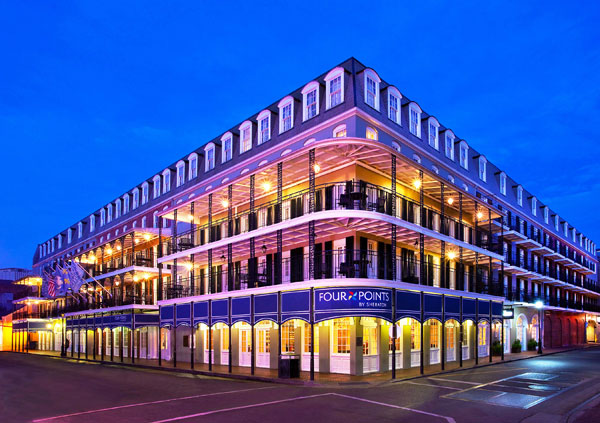
Bellenis shot this hotel at dawn, from a street corner on Bourbon Street, in New Orleans. “Bourbon Street at dusk (what the shot originally called for) is absolute mayhem, as I learned from my tech-scout. So instead I shot it at around 4:35am, which eliminated people and cars. The effect is the same as a dusk shot.” Bellenis shot the scene entirely by available light. “It’s just a matter of getting the timing right between the daylight and the incandescent lights. Also, I needed to shoot as wide as possible (at 16mm), because there was no room to move further back into the crosswalk, which would then have brought traffic lights into the picture.”

This was shot at the hotel’s luxurious new Boathouse Suites, in Bar Harbor, Maine. “This is an example where I wanted differential (selective) focus to direct attention primarily to the table setting. My stylist pulled together all the elements and staged the setting for a romantic moment out on the deck, giving the impression that the guests would be returning from a busy day’s leisure activities before heading out to dinner.” For a shot like this to succeed, Bellenis emphasizes that “the lighting and time of day have to be right, along with the styling and composition. Everything has to balance.” Reflectors came in from the right, for the champagne bucket, to balance the strong sunlight from the opposite side.
From Power Packs To Monolights
Bellenis bought 20,000 ws of Speedotron Black Line gear once he arrived in Boston, having sold all of his 240w equipment when he left his London studio. “I needed all that power because I was shooting 4x5 and medium format. When I switched to a D-SLR, I got rid of the bulky power packs and bought a variety of monolights, from Calumet and Elinchrom.” That included some battery-driven units.
“My monolights are almost disposable. I’ve been everywhere with these lights, coast to coast and abroad to Barbados, Belize, Guatemala, Scotland, Honduras, the Caribbean. They get beaten up, so I replace them regularly.”
Why not rent? “For me,” Bellenis explains, “it’s just a matter of the time it takes. If I fly into a resort in the evening, I want to be able to start shooting the next morning. What’s more, my clients won’t necessarily pay for the rental. There’s a certain comfort in having your own stuff and not worrying about what gear you’ll get or returning it in good shape. I’ve always had my own gear. The only things I’ve ever rented have been specialty lenses, like the 17mm tilt-shift, or a very long lens, like a 500mm.” On flights, he carries his camera gear and 17” MacBook Pro with him, but checks the tripods, lights, and grip gear.

“We knew we wanted this angle, so we stood on the terrace and looked at nearby buildings, which was when we spotted the perfect vantage point. That would be from a balcony in an adjacent building. We talked to the building manager over there and got permission to use that vacant apartment. The balcony wasn’t really big enough to shoot from, so I had to practically hang out the window with my camera to get the shot.” Bellenis directed his stylist via cell phone, and when all was ready he made the shot at dusk using a 70-200mm lens to bridge the distance.
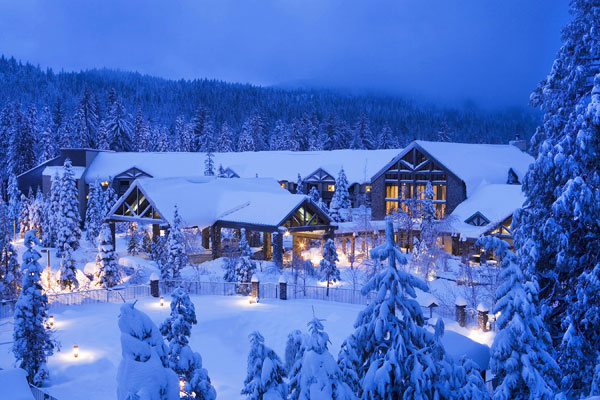
As part of a larger assignment, Bellenis had scheduled one shoot day at this location. “They wanted a dusk shot but that proved impossible because of the thick fog on that day. Because we’d only be there one night and wouldn’t have another chance at a dusk shot, we got up at 4 the next morning. It was still foggy, but not as bad. The wind helped create two or three breaks in the fog, which is when I shot this with a 24-70mm lens. I stood out on a balcony in another part of the hotel, in the freezing cold.” (Agency: MMG Advertising Agency, Kansas City.)
Choosing What To Light
Even though he brings a lot of lighting gear to a shoot, that doesn’t mean he’ll always use it. But when he does, Bellenis has a mantra about using lights. “I don’t want my pictures to ever look like I use any lighting. If it looks like I used strobe, I failed.”
The interior spaces that Bellenis usually lights are guest rooms, bathrooms, restaurants, bars, meeting rooms—“spaces that you absolutely have to light up.” A first step, where practical, is to swap out screw-in fluorescents with incandescent bulbs that he brings along, making white balance with strobe lighting easier. Where the situation warrants it, Bellenis will use the strobe’s modeling lights to match interior lighting, also for better color balance.
What about using HDR? “If I can get the contrast to where I want it by judiciously employing my lights, then this is the preferred route. When I do engage HDR, I use a program called Bracketeer (www.pangeasoft.net/pano/bracketeer—available direct or on the Mac App Store).”
Bellenis’s lighting kit also includes Chimera softboxes, grids, snoots, and round Lastolite collapsible reflectors. While he carries umbrellas, he generally avoids using them. “I’d rather just bounce light off the walls, if the paint is relatively neutral, or instead bounce light off a bedsheet stretched across lighting stands or taped to a window. And if I’m shooting lifestyle, I don’t like the spidery catchlights umbrellas add to a person’s eyes. Generally, if I’m shooting people, I’ll use softboxes. The only time I employ umbrellas is when I need to copy a painting (to be later composited into a shot): I’ll put up two umbrellas as copy lights.”

Bellenis shot this scene for a cruise line, in Belize, the aim being to focus attention on the ship. However, to help the viewer better relate to the scene, “I threw the couple in at the last minute to add to the story—actually, it’s my stylist and a crew member.” Sometimes shooting hospitality is a rough life. “We stayed on the cruise ship for 10 days and sailed around Belize, Guatemala, and Honduras.” It was not all play. Bellenis had to shoot the ship’s amenities, interiors, passenger activities, and destinations—basically anything and everything cruise-related. (Creative Director: Bob Minihan; Agency: ISM Advertising Agency, Boston.)
To see more of John Bellenis’s work, visit www.johnbellenis.com.
- Log in or register to post comments











